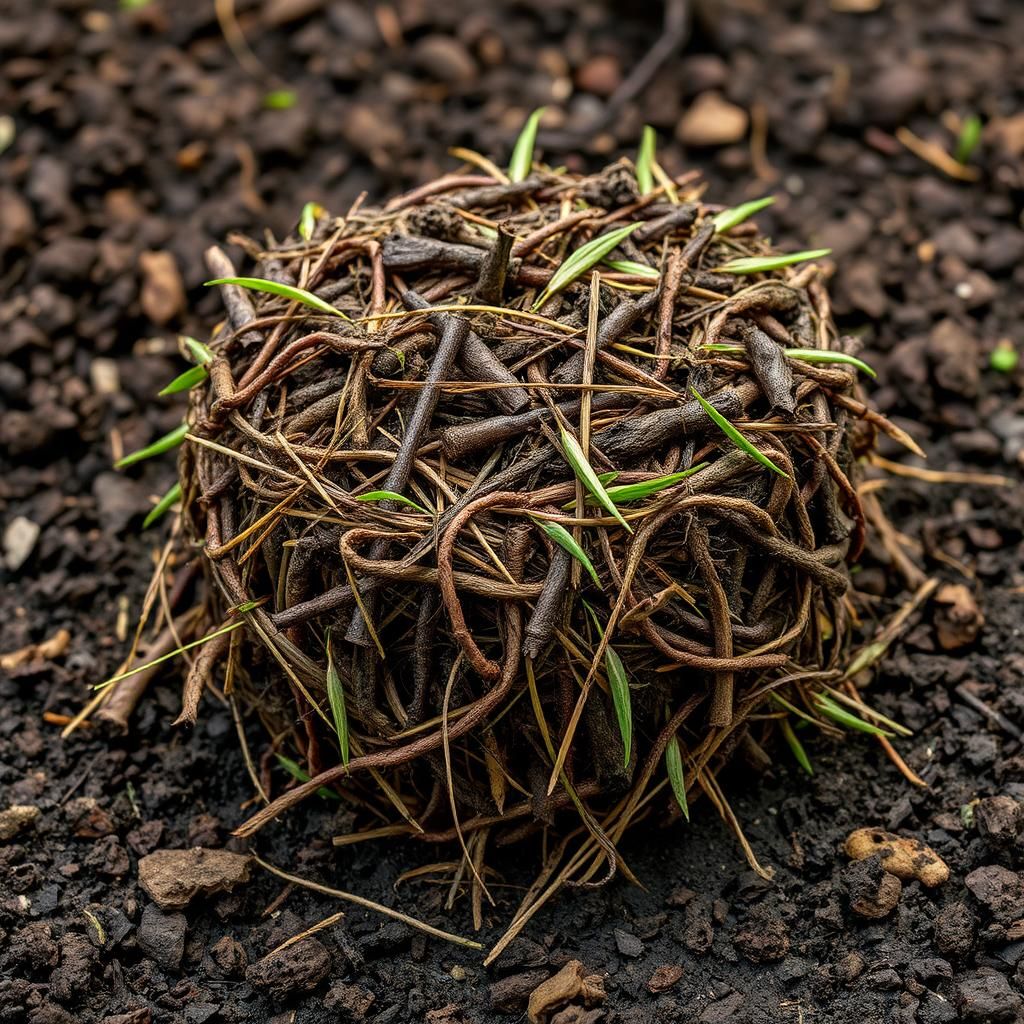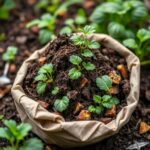Is Rotted Grass a Good Compost? Discover the Benefits and How to Use It Effectively

Composting is an essential practice for sustainable gardening, but not all organic materials are created equal. One often-overlooked resource is rotted grass, which can be a valuable addition to your compost pile. Understanding its benefits and how to properly incorporate it into your composting routine can greatly enhance soil health and promote plant growth. In this article, we will explore whether rotted grass is indeed good compost, the advantages it offers, and effective strategies for its use in creating rich, nutritious compost for your garden. Discover how to turn this seemingly waste material into a gardening powerhouse.
Is Rotted Grass a Good Compost?
Rotted grass can be an excellent addition to compost due to its high nutritional value, especially in nitrogen content. As it decomposes, it provides essential nutrients that help create a rich soil amendment suitable for various gardening applications. When mixed with other organic materials, such as kitchen scraps and leaves, rotted grass enhances the overall balance of the compost, facilitating the breakdown process. However, it is important to use it in moderation; too much grass can lead to compacting and poor aeration in the compost pile, potentially resulting in an anaerobic environment that emits unpleasant odors.
Benefits of Rotted Grass in Compost
Rotted grass contributes significantly to the nutrient content of compost, particularly with a high level of nitrogen, which is crucial for plant growth. The decomposition process breaks down complex organic matter into more available forms of nutrients, improving soil fertility. Furthermore, rotted grass aids in improving the water retention and structure of the final compost product, leading to healthier plants and enhanced garden performance.
How to Make Rotted Grass
To create rotted grass, it's essential to allow freshly cut grass to decompose for several weeks or months in a dry and sunny area, which promotes the growth of beneficial microorganisms. Turning the grass occasionally helps aerate the pile, accelerating decomposition. The ideal conditions include maintaining a reasonable moisture level to prevent it from becoming too wet or compacted, which can slow down the process and promote odor issues.
Mixing Rotted Grass with Other Compost Materials
When mixing rotted grass into your compost pile, it's essential to combine it with various carbon-rich materials, such as dried leaves, straw, or shredded cardboard, to achieve a balanced carbon-to-nitrogen ratio. This blend ensures that decomposition occurs effectively, as both types of materials work together to provide the necessary structure and nutrient availability. Incorporating a diversity of materials encourages a thriving ecosystem within the compost, promoting the activity of beneficial microbes.
See also:
Pitfalls of Using Rotted Grass in Compost
While rotted grass is beneficial, using it in excessive amounts can lead to potential issues in the compost pile. If too much grass clippings are introduced, it can create a dense, compact structure that restricts air circulation, which may result in anaerobic conditions. This environment can produce a foul odor and inhibit the growth of essential microorganisms. To avoid these pitfalls, maintaining a good mix of materials and regularly turning the compost is vital.
How to Use Rotted Grass in Your Garden
Once fully decomposed, rotted grass can be utilized in various ways in the garden. It can be incorporated directly into the soil to improve its fertility and structure, or it can be used as a top dressing around plants to provide a slow-release source of nutrients. Additionally, it can be mixed with other composted materials to create a more balanced amendment for potting mixes or garden beds, helping to foster an ideal environment for plant growth.
| Item | Nitrogen Content | Ideal Use |
|---|---|---|
| Rotted Grass | High | Soil Amendment |
| Dried Leaves | Low | Carbon Source |
| Kitchen Scraps | Medium | Nutrient Booster |
| Straw | Low | Carbon Source |
| Composted Manure | Medium-High | Nutrient-Rich |
Understanding the Nutritional Value of Rotted Grass in Compost
Rotted grass is an excellent addition to compost due to its rich nutritional content, particularly in nitrogen, which is essential for plant growth. When grass clippings decompose, they break down into organic matter that enhances soil structure, retains moisture, and fosters a diverse community of beneficial microorganisms. The decomposition process also reduces the risk of pest problems associated with using fresh clippings, making rotted grass a safer and more effective option for enriching your compost pile. Properly incorporating rotted grass can significantly contribute to the fertility and health of your garden soil.
Benefits of Using Rotted Grass in Your Compost
Incorporating rotted grass into your compost pile brings several benefits. It is not only high in nitrogen, which is crucial for plant development, but it also contributes carbon as it decomposes, creating a balanced carbon-to-nitrogen ratio. This balance promotes effective composting and leads to the production of nutrient-dense compost that can significantly enhance the growth and vitality of your plants. Rotted grass also facilitates aeration in the compost mix, preventing an overly compact environment that can hinder decomposition.
How to Prepare Rotted Grass for Composting
Preparing rotted grass for your compost is quite simple. First, ensure that the grass is fully decomposed before adding it to your compost pile. To facilitate this, you can lay clippings in a shaded area and regularly turn them to promote air circulation. Once you’ve confirmed that the grass has reached a rotted state—characterized by a darkened color and a crumbly texture—you can mix it with other materials in your compost, such as kitchen scraps and dried leaves, to achieve the best results.
See also:
Rotted Grass vs. Fresh Grass Clippings: Which is Better?
While fresh grass clippings can be beneficial for composting, rotted grass is generally considered the better choice. Fresh clippings have higher moisture content, which can lead to anaerobic conditions in the compost pile, resulting in foul odors and slow decomposition. In contrast, rotted grass is easier to mix with other compost ingredients, minimizing the risk of mats forming and promoting a healthier microbial environment. This ultimately makes rotted grass a more practical and effective compost component.
Common Myths About Rotted Grass in Composting
There are several myths regarding the use of rotted grass in compost. One common misconception is that it attracts pests to the compost pile. However, when properly decomposed, rotted grass does not emit the odors that attract nuisance insects and can actually deter them by promoting a balanced, well-aerated compost mix. Another myth is that rotted grass lacks nutrients compared to fresh clippings; in reality, the decomposition process increases the availability of macro and micronutrients, enhancing its value as a compost ingredient.
Best Practices for Mixing Rotted Grass into Compost
To maximize benefits when mixing rotted grass into your compost, follow best practices for ratios and layering. Aim for a balance by using rotted grass as a green component (high nitrogen) and combine it with brown materials (high carbon), such as dried leaves or straw. It is also important to monitor the moisture levels; the compost should be damp but not soggy. Regular turning of the pile will aid in aeration and speed up decomposition, ensuring that the rotted grass contributes effectively to the creation of nutrient-rich compost.
Questions from Our Readers
Is rotted grass a good compost?
Rotted grass can be an excellent addition to compost. When grass clippings are allowed to decompose, they break down into nutrient-rich material that can enhance the quality of your compost. However, it’s essential to ensure that the grass is free from chemicals or pesticides, as these can harm the composting process and the plants that will use the compost.
How do I know if my grass is rotted enough for compost?
To determine if your grass is sufficiently rotted, look for a dark, crumbly texture and an earthy smell. If the grass still appears green or has a strong odor, it may not be fully decomposed. A proper balance of carbon and nitrogen is crucial for effective composting, and fully rotted grass should have a balanced composition.
See also:
Can I mix rotted grass with other compost materials?
Yes, mixing rotted grass with other compost materials is beneficial. Combining it with brown materials, such as dried leaves or cardboard, can help balance the carbon-to-nitrogen ratio, which is necessary for efficient composting. Just ensure to maintain adequate aeration and moisture in the compost pile for optimal decomposition.
What are the benefits of using rotted grass in compost?
Using rotted grass in compost provides several benefits. It adds vital nutrients, improves soil structure, and enhances moisture retention in the soil. Additionally, it can help promote healthy microbial activity, which is essential for a thriving compost ecosystem.

If you want to read more articles like Is Rotted Grass a Good Compost? Discover the Benefits and How to Use It Effectively, we recommend you check out our Compost category.
Leave a Reply
Related Articles